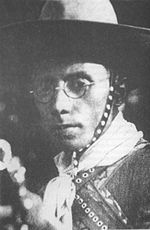User:Nsophiay/sandbox
| Welcome to this sandbox page, a space to experiment with editing.
You can either edit the source code ("Edit source" tab above) or use VisualEditor ("Edit" tab above). Click the "Publish changes" button when finished. You can click "Show preview" to see a preview of your edits, or "Show changes" to see what you have changed. Anyone can edit this page and it is automatically cleared regularly (anything you write will not remain indefinitely). Click here to reset the sandbox. You can access your personal sandbox by clicking here, or using the "Sandbox" link in the top right.Creating an account gives you access to a personal sandbox, among other benefits. Do NOT, under any circumstances, place promotional, copyrighted, offensive, or libelous content in sandbox pages. Doing so WILL get you blocked from editing. For more info about sandboxes, see Wikipedia:About the sandbox and Help:My sandbox. New to Wikipedia? See the contributing to Wikipedia page or our tutorial. Questions? Try the Teahouse! |
Between 1877 and 1879, a large part of the sertão was hit by the most severe drought in Brazilian history, known as the Great Drought, with Ceará being the hardest hit region. As a result, thousands of Nordestinos migrated to other parts of Brazil, especially to the Amazon, and about 200,000 people died.[1]
Republic
[edit]During the Old Republic, the interior of the Northeast was under the dominion of local oligarchs called coronéis, who enforced their power through violence and fear. Two notable examples of responses to this oppression were the messianic community of Canudos, in the interior of Bahia, which was destroyed in the War of Canudos (1896–1897), and the Cangaceiros in the 1930s.[2][3]
Cangaceiros
[edit]Independent armed groups using guerilla tactics emerged in the Brazilian Northeast in the early 20th century, and were most active between 1922 and 1930. These groups of cangaceiros were mostly comprised of people from lower socioeconomic backgrounds and were led by a chief.[4][unreliable source?]


The most notorious of these chiefs was Virgolino Ferreira da Silva, better known as Lampião. The Brazilian government fervently sought his arrest, even promising 50,000,000 réis to whoever brought in Lampião "dead or alive." Besides Lampião, other bandits and outlaws also become myths in the Northeast, like Antônio Silvino Corisco, known as Diabo Louro (the Blond Devil). In the 1930s, women also became involved in banditry, with Maria Bonita being the most notable example.
Deeply knowledgeable of the semi-arid interior of the region, called the caatinga, the gangs gained support from local farmers, politicians, peasants and priests, both due to fear of the bandits themselves as well as a need for the services they were providing. The rank of Captain Virgolino Ferreira, for example, was given by Father Cícero do Juazeiro.
The end of the cangaceiros was in 1938, when Lampião's gang was slaughtered on the banks of the São Francisco River in Angicos, Alagoas. Though Diabo Louro survived until 1940, he did almost nothing to keep the promise to "avenge the death of Lampião."
According to scholars,[who?] one of the factors that contributed to the proliferation of gangs was the great drought that decimated the Northeast in 1877, with extreme poverty and hunger causing thousands in the sertão, (hinterland), with no prospect of survival, to leave in search of riches, paving the way for the cangaceiros.
Industrialization
[edit]During the administration of Juscelino Kubitschek (1956–61), the Superintendency for the Development of the Northeast, or Sudene, was created with the goal of promoting the development of the Northeast region. In the following decades, under the Populist Republic and the military dictatorship, the investments made by Sudene started a process of industrialization around Salvador, Fortaleza, and Recife, as well as a burgeoning agriculture industry around the São Francisco river.[5][6][7]
- ^ Marengo, Jose A.; Torres, Roger Rodrigues; Alves, Lincoln Muniz (2016-06-09). "Drought in Northeast Brazil—past, present, and future". Theoretical and Applied Climatology. 129: 1189–1200. doi:10.1007/s00704-016-1840-8. Retrieved 2023-12-03.
- ^ "Guerra de Canudos: um resumo de como foi a revolta - Manual do Enem". Quero Bolsa. Retrieved 2023-11-01.
- ^ Ardissao, Marcell de Oliveira. "Cangaço: o que foi, resumo, consequências". História do Mundo (in Brazilian Portuguese). Retrieved 2023-11-01.
- ^ Paulo Gil Soares, in Vida, paix~ao e mortes de Corisco, o Diabo Louro
- ^ "Você sabe o que é SUDENE? Tire todas as suas dúvidas aqui!". Descomplica. 2014-12-05. Retrieved 2023-11-01.
- ^ Lima, Ana Carolina da Cruz; Lima, João Policarpo Rodrigues (October 2010). "Programas de desenvolvimento local na região Nordeste do Brasil: uma avaliação preliminar da "guerra fiscal"". Economia e Sociedade (in Portuguese). 19 (3): 557–588. doi:10.1590/S0104-06182010000300006. ISSN 0104-0618.
- ^ "Indústria na Região Nordeste do Brasil". Só Geografia (in Brazilian Portuguese). Retrieved 2023-11-01.

